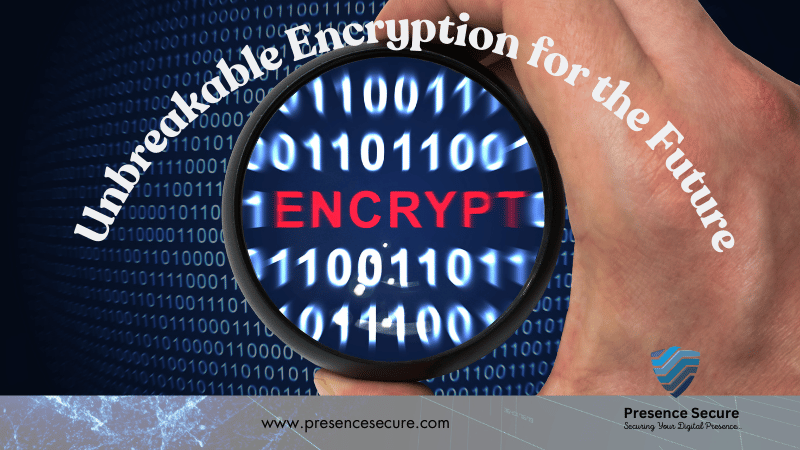In today’s digital world, where cyber-attacks and data breaches are becoming increasingly sophisticated, securing sensitive information has never been more critical. Traditional encryption methods, such as public-key cryptography, are based on complex mathematical algorithms. While these methods are effective for now, the rapid advancement of computing power, especially with the rise of quantum computing, threatens to make them obsolete. Enter Quantum Key Distribution (QKD)—a revolutionary approach to encryption that leverages the fundamental laws of quantum mechanics, offering a level of security that is virtually unbreakable.
At its core, QKD focuses on securely transmitting encryption keys between two parties using quantum particles like photons. The beauty of this method lies in the way quantum mechanics operates. QKD uses principles like superposition and entanglement, where particles can exist in multiple states at once or be intrinsically linked, to secure data in a way that cannot be hacked without detection. This is because any attempt to intercept or measure these quantum particles disrupts their state, immediately alerting both the sender and the receiver that a breach has occurred. This property of quantum particles ensures that if an eavesdropper tries to steal the encryption key during transmission, the data is compromised, and the interception is immediately detected.
One of the most popular applications of QKD is known as the BB84 protocol, named after its creators, Charles Bennett and Gilles Brassard. This protocol ensures that the key exchange between two parties is completely secure, even in the presence of an attacker. By using polarized photons to represent binary data (0s and 1s), the BB84 protocol makes it impossible for an eavesdropper to copy or steal the key without altering the data. The sender and receiver can then compare certain portions of the key to check for discrepancies, and if any are found, they know a third party has interfered. This process ensures that only a trusted key can be used to encrypt and decrypt the actual message, making QKD not only highly secure but also incredibly reliable.
Why Quantum Key Distribution is Superior to Classical Encryption
What sets QKD apart from classical encryption methods is the fact that it is future-proof. Traditional encryption relies on the computational difficulty of solving complex mathematical problems, like factoring large prime numbers, which underpins much of today’s security protocols. However, with the development of quantum computers, these mathematical problems can be solved exponentially faster than classical computers. Quantum computers are expected to break many encryption systems that protect sensitive data today, making current cybersecurity measures vulnerable. In contrast, QKD is immune to such threats because it is based on the immutable laws of physics rather than on mathematical complexity.
Another significant advantage of QKD is that it provides forward security. This means that even if an attacker captures and stores the encrypted data today, they will never be able to decrypt it in the future because they will never possess the quantum key needed to unlock it. The ability to detect eavesdropping in real-time, combined with the fact that the encryption key cannot be copied or intercepted without detection, ensures that QKD offers unparalleled security for any communication system, making it ideal for use in industries that handle highly sensitive information, such as finance, government, and defense.
The Challenges of Implementing QKD
Despite its immense potential, Quantum Key Distribution is not without its challenges. One of the biggest obstacles is the distance limitation of QKD systems. Quantum signals, such as photons, tend to lose their strength over long distances, which limits how far encryption keys can be sent using this method. While researchers are working on developing quantum repeaters—devices that could extend the range of QKD—this technology is still in its early stages. Currently, most QKD systems are limited to relatively short distances, which restricts their scalability for global networks.
Another challenge is the cost and complexity of setting up a QKD network. Because QKD systems require specialized equipment to generate, transmit, and detect quantum particles, the cost of implementation is significantly higher than that of traditional encryption methods. This makes QKD inaccessible to most organizations at the moment, limiting its use to highly specialized sectors. However, as with most emerging technologies, the costs are expected to decrease as the technology matures, potentially making QKD more affordable and widespread in the future.
The Future of Quantum Key Distribution
The future of Quantum Key Distribution is promising. Governments and organizations around the world are investing heavily in quantum research, recognizing that the need for secure communication is only going to grow as cyber threats become more sophisticated. Several countries, including China, the United States, and several in Europe, have already launched QKD-based communication networks, demonstrating the potential of this technology in protecting critical infrastructure and sensitive data.
In the longer term, satellite-based QKD systems are being explored as a way to overcome the distance limitations currently faced by ground-based networks. China, for instance, launched the world’s first quantum satellite in 2016, named Micius, which successfully demonstrated the ability to send quantum keys between Earth and space. This breakthrough paves the way for global QKD networks, enabling secure communication across vast distances without the need for repeaters.
While it may take time for Quantum Key Distribution to become mainstream, its potential as the foundation for unbreakable encryption cannot be overstated. As quantum technology continues to evolve, and as traditional encryption systems face increasing threats from quantum computing, QKD is poised to play a critical role in the future of secure communication. For industries that rely on the protection of sensitive data, the adoption of QKD is not just a matter of security—it’s a matter of necessity.
Conclusion
Quantum Key Distribution represents a significant leap forward in the field of cyber security, offering an unbreakable method for encrypting and transmitting data. By using the fundamental laws of quantum mechanics, QKD ensures that encryption keys are secure from any interception, making it a future-proof solution to the growing threats posed by cybercriminals and quantum computing advancements. Although the technology still faces challenges such as distance limitations and high costs, its potential to revolutionize secure communication makes it a vital area of research and development. As we look toward a future where data privacy and security are more important than ever, QKD is shaping up to be the cornerstone of encryption in the quantum age.
Faith Kajotoni Peter


